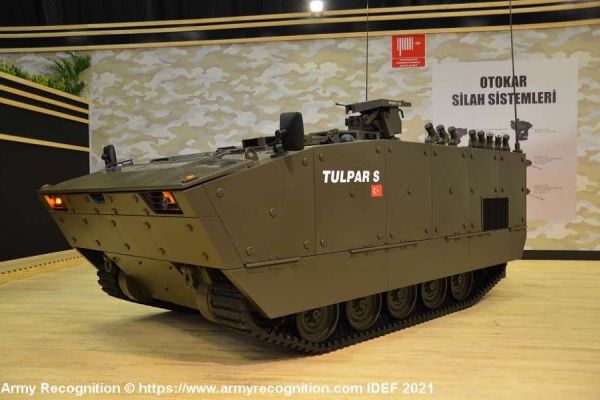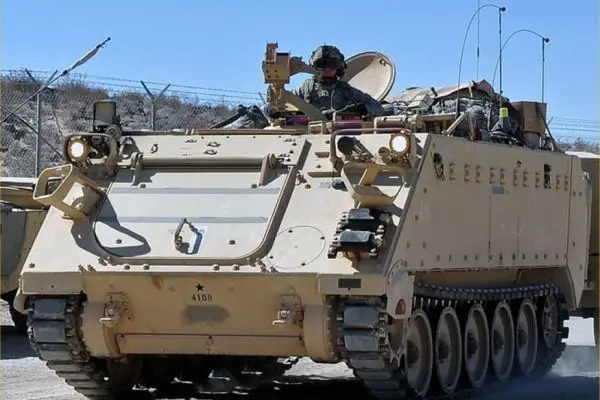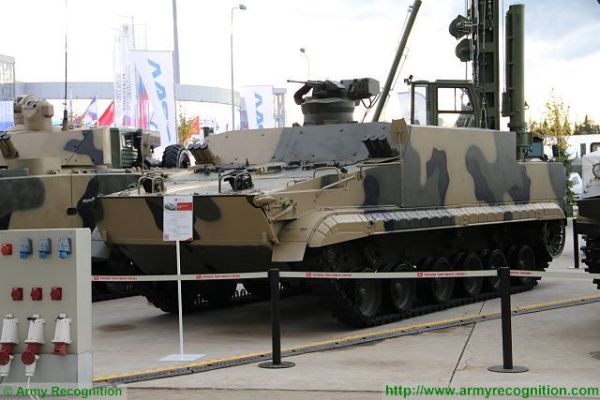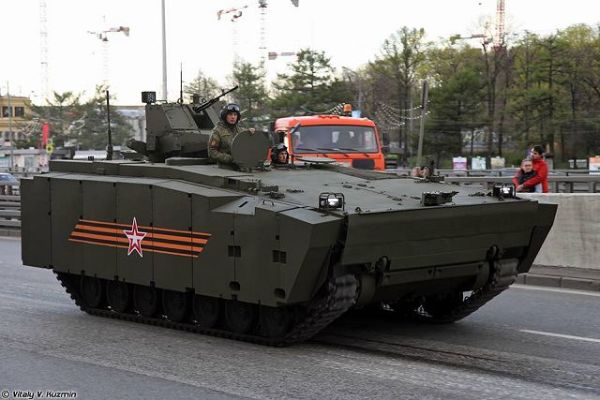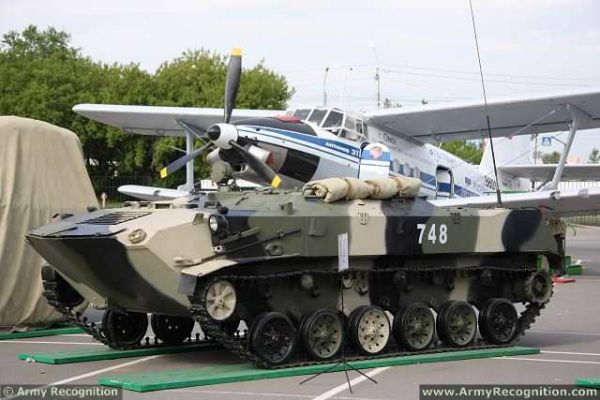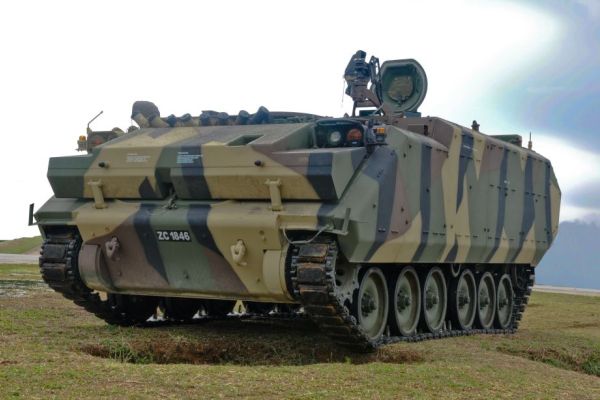Tracked APC Vehicles.
PBV Pansarbandvagn 302.

The Pansarbandvagn 302, or pbv 302, is a Swedish armored personnel carrier (APC) developed by Hägglunds (now part of BAE Systems Hägglunds) in the 1960s. Built to navigate Sweden's diverse and challenging terrain, the pbv 302 was designed for the reliable transport of infantry while providing protection from light threats.
Country users: Sweden, Ukraine
Description
The Pansarbandvagn 302, or pbv 302, is a Swedish armored personnel carrier (APC) developed by Hägglunds (now BAE Systems Hägglunds) in the 1960s. Developed to replace the pbv 301, the pbv 302 was built with versatility and durability in mind. Its hull is constructed from all-welded rolled steel, providing protection against projectiles up to 20 mm in caliber from the front. The vehicle’s double-skinned sides above the tracks add buoyancy and offer limited protection against High-Explosive Anti-Tank (HEAT) rounds. With a driver, gunner, and commander at the front, and seating for nine infantrymen in the rear compartment, the pbv 302’s internal layout is optimized for troop transport, quick dismounts, and tactical flexibility. Additionally, a range of variants—such as command, ambulance, and cargo configurations—allowed the pbv 302 to fulfill various operational roles.
A distinctive feature of the pbv 302 is its ability to operate as a fully amphibious vehicle, propelled by its tracks when in water. Before entering water, a two-part trim vane at the front is deployed, and bilge pumps are engaged to maintain buoyancy. The pbv 302's combat effectiveness was further enhanced for peacekeeping deployments in the Balkans with an upgrade package that included additional passive armor, spall liners, and external storage boxes. These modified vehicles, designated as Pbv 302C, were equipped to improve survivability in high-threat environments.
PBV 302 variants:
- Pbv 302C: Enhanced armor protection and spall liners for increased battlefield survivability, deployed in the Balkans.
- Cargo Carrier Variant: Modified to carry up to 2,000 kg of cargo, facilitating resupply missions.
- Ambulance Variant: Configured to transport up to six stretchers with a special kit, or four stretchers in the basic configuration.
Technical Data
-
Armament
The main armament of the pbv 302 is a 20 mm Hispano-Suiza automatic cannon mounted on a one-person turret located to the left and slightly to the rear of the driver. With a 500 rounds-per-minute cyclic rate, the 20 mm cannon has an elevation of +50º and a depression of -10º, and the turret can traverse a full 360º, allowing for flexible engagement against both ground and air targets. The vehicle carries three belts of 135 High-Explosive (HE) rounds each and ten 10-round magazines of Armor-Piercing (AP) rounds, providing a total of 405 HE and 100 AP rounds. The gunner uses a monocular sight with 8x magnification for targeting ground threats, while open sights are employed for aerial engagement. For additional observation, three day periscopes provide forward visibility, with one at the rear.
-
Design and protection
The pbv 302 is armored with rolled steel, which protects the crew and passengers from small arms and shrapnel. The hull’s front plating is reinforced to withstand 20 mm caliber projectiles, and the double-skinned sides offer enhanced resistance to HEAT projectiles. Inside, the vehicle is configured to maximize functionality and crew protection. The driver sits centrally at the front with a hatch that opens to the rear. In front of the driver are three day periscopes for visibility, and the central periscope can be swapped with a passive night periscope. A collapsible windscreen, stored in a box on the rear door, provides extra protection in adverse weather.
The commander sits to the right of the driver, with five day periscopes providing 360º situational awareness, while the gunner operates the 20 mm cannon from the turret to the left. In the rear compartment, nine infantrymen are seated: three on each side facing inward, one facing forward, and two back-to-back near the doors. The vehicle’s design includes two large rear doors for troop entry and exit. Above the troop compartment, hydraulically operated hatches controlled by the commander allow soldiers to engage from within the vehicle. A pressure-sensitive strip under the hatches prevents accidental closure when hands or weapons are in contact.
-
Mobility
The pbv 302’s is powered by a Volvo-Penta THD 100B turbocharged 6-cylinder diesel engine, generating 280 horsepower at 2,200 rpm. With a power-to-weight ratio of 20.74 hp/ton, the vehicle reaches a maximum road speed of 66 km/h and an amphibious speed of 8 km/h. It features an 8-speed manual transmission (8 forward and 2 reverse gears) and a double-disc clutch plate, with power transmitted to a cross-shaft connected to clutches and disc brakes, enabling clutch-and-brake steering.
The suspension system includes torsion bars with five rubber-tyred road wheels per side, the drive sprocket at the front, and the idler at the rear. Hydraulic shock absorbers are installed at the first and last roadwheel stations, providing stability over uneven terrain. The pbv 302 is fitted with Alvis Hägglunds M70 tracks, which offer 20% better traction on soft ground compared to earlier designs and can last over 10,000 km with one reconditioning. The vehicle handles gradients of up to 60%, vertical obstacles of 0.61 m, and trenches up to 1.8 m wide. For water operations, a trim vane is deployed, and bilge pumps are activated to maintain flotation.
-
Combat Equipment
The pbv 302 is outfitted with equipment tailored for combat operations. The gunner’s optical sight provides effective targeting for the 20 mm cannon, which can be used for both ground and limited aerial threats. The sighting equipment lacks stabilization but offers sufficient accuracy for typical APC engagement ranges. The vehicle does not have an NBC (Nuclear, Biological, Chemical) protection system as standard, though it can be fitted with one if required.
The pbv 302’s communication suite includes a standard Swedish radio for effective command and unit coordination, with an intercom system allowing clear communication between crew and troops in the rear compartment. For infantry use, hydraulically operated hatches above the troop compartment can be partially or fully opened to allow troops to engage with personal weapons. Smoke grenade launchers are also fitted, providing an additional layer of concealment when operating in combat environments.
Specifications
-
Armament
One 20 mm Hispano-Suiza cannon and 2 × 71mm Lyran mortars
-
Country users
Sweden, Ukraine
-
Designer Country
Sweden
-
Combat Equipment
Smoke grenade launchers, basic optical sights, and a radio communication system
-
Crew
2 (driver, gunner) + 10 infantry
-
Armor
Frontal protection against 20 mm projectiles, with double-skinned sides for added buoyancy and limited HEAT resistance.
-
Weight
13,500 kg
-
Speed
Road 66 km/h; Water 8 km/h
-
Range
300 km
-
Dimensions
Length: 5.35 m; Width: 2.86 m; Height: 2.5 m






































